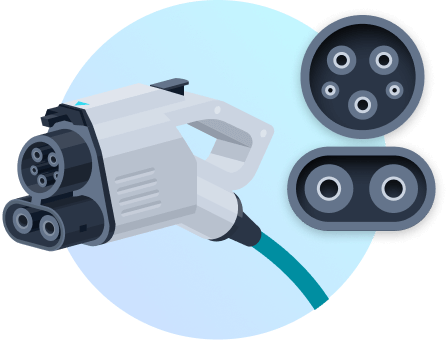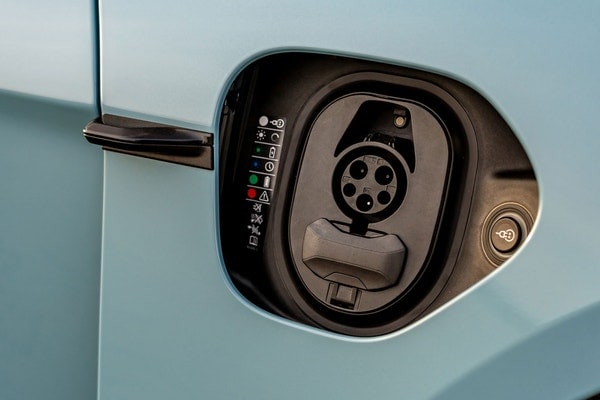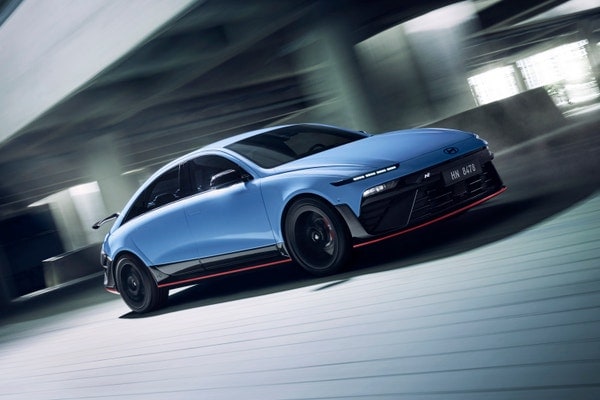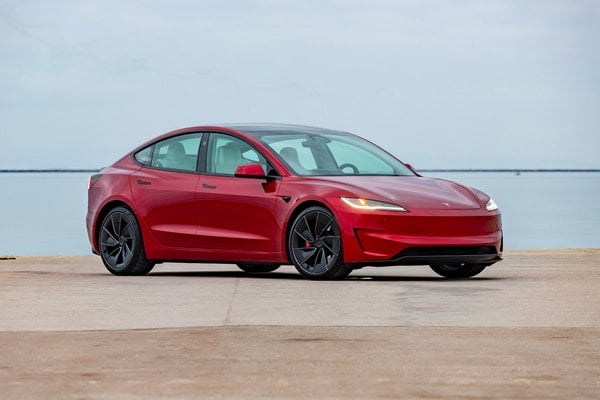Helpful shopping links
2025 Hyundai IONIQ 6 videos
2023 Hyundai Ioniq 6 vs. 2023 Tesla Model 3 | Electric Sedan Comparison Test | Price, Range & More!
NOTE: This video is about the 2023 Hyundai IONIQ 6, but since the 2025 Hyundai IONIQ 6 is part of the same generation, our earlier analysis still applies.
The Tesla Model 3 has been largely unchallenged in the entry-level premium electric sedan segment — until now, that is. The all-new 2023 Hyundai Ioniq 6 is the first true competitor to the Model 3, so we put the two head-to-head. Did Hyundai build a better Tesla? Or will the Model 3 reign supreme? Find out with Edmunds' Brian Wong in our electric sedan comparison test… above!
PRICE CHECKER™
Check a dealer's price
Bring back a dealer's quote, and we'll tell you if it's a good price!
Check your price quote
Price:
$ -
Graph shown is a sample only
FAQ
Is the Hyundai IONIQ 6 a good car?
The Edmunds experts tested the 2025 IONIQ 6 both on the road and at the track, giving it a 8.1 out of 10. Edmunds’ consumer reviews show that the 2025 IONIQ 6 gets an average rating of 5 stars out of 5 (based on 33 reviews) What about cargo capacity? When you're thinking about carrying stuff in your new car, keep in mind that the IONIQ 6 has 11.7 cubic feet of trunk space. And then there's safety and reliability. Edmunds has all the latest NHTSA and IIHS crash-test scores, plus industry-leading expert and consumer reviews to help you understand what it's like to own and maintain a Hyundai IONIQ 6. Learn more
What's new in the 2025 Hyundai IONIQ 6?
According to Edmunds’ car experts, here’s what’s new for the 2025 Hyundai IONIQ 6:
- Minor revisions to standard feature availability
- Part of the first Ioniq 6 generation introduced for 2023
Is the Hyundai IONIQ 6 reliable?
To determine whether the Hyundai IONIQ 6 is reliable, read Edmunds' authentic consumer reviews, which come from real owners and reveal what it's like to live with the IONIQ 6. Look for specific complaints that keep popping up in the reviews, and be sure to compare the IONIQ 6's 5-star average consumer rating to that of competing vehicles. Learn more
Is the 2025 Hyundai IONIQ 6 a good car?
There's a lot to consider if you're wondering whether the 2025 Hyundai IONIQ 6 is a good car. Edmunds' expert testing team reviewed the 2025 IONIQ 6 and gave it a 8.1 out of 10. Our consumer reviews show that the 2025 IONIQ 6 gets an average rating of 5 stars out of 5 (based on 33 reviews). Safety scores, fuel economy, cargo capacity and feature availability should all be factors in determining whether the 2025 IONIQ 6 is a good car for you. Learn more
How much should I pay for a 2025 Hyundai IONIQ 6?
The least-expensive 2025 Hyundai IONIQ 6 is the 2025 Hyundai IONIQ 6 SE Standard Range 4dr Sedan (electric DD). Including destination charge, it arrives with a Manufacturer's Suggested Retail Price (MSRP) of about $37,850.
Other versions include:
- SE Standard Range 4dr Sedan (electric DD) which starts at $37,850
- SE 4dr Sedan (electric DD) which starts at $42,800
- SEL 4dr Sedan (electric DD) which starts at $45,600
- SE 4dr Sedan AWD (electric DD) which starts at $46,300
- SEL 4dr Sedan AWD (electric DD) which starts at $49,100
- Limited 4dr Sedan (electric DD) which starts at $51,100
- Limited 4dr Sedan AWD (electric DD) which starts at $54,600
What are the different models of Hyundai IONIQ 6?
If you're interested in the Hyundai IONIQ 6, the next question is, which IONIQ 6 model is right for you? IONIQ 6 variants include SE Standard Range 4dr Sedan (electric DD), SE 4dr Sedan (electric DD), SEL 4dr Sedan (electric DD), and SE 4dr Sedan AWD (electric DD). For a full list of IONIQ 6 models, check out Edmunds’ Features & Specs page. Learn more










